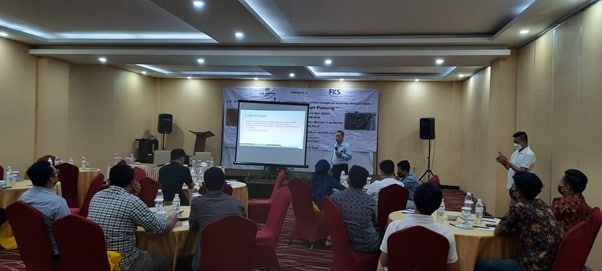Hoping to increase distiller’s dried grains with solubles (DDGS) inclusion rates in Indonesian feed lots, the U.S. Grains Council’s (USGC’s) team in Southeast Asia and Oceania (SEA&O) recently partnered with a local distributor to demonstrate the benefits it offers in beef cattle feed rations.
The comprehensive training covered topics including formulation techniques for using the existing database of price and raw materials; formulation by production appearance; cattle nutritional needs; and feed ingredient quality, including its effect on the formula.
“The participants enjoyed the training session as it helped enhance their knowledge of modern feed formulation and the importance of quality feed when overall feed costs play a huge role in their business operations today,” said Chuin Shern Lee, USGC SEA&O regional marketing manager.
Participants were asked to practice using a formulation software during the program. The model showed that DDGS could still be included in the ration up to three percent at DDGS levels up to $550 per metric ton. Following the training, each participant was able to formulate their own ration with the software provided by Dr. Budi Tangendjaja, USGC regional technical consultant for SEA&O.
Tangendjaja also organized a feed formulation contest for participants. The attendee who came up with the least-cost feed formula was the winner. Using current DDGS prices, the winning formula showed a reduction in overall feed costs by $4.62 per ton with 5.66 percent DDGS inclusion rate versus zero DDGS inclusion. The creative component of the training motivated participants to see the economic value and benefits of DDGS for themselves.
Through programming like this, the Council hopes to put the power of dynamic feed formulation in the hands of the producer and improve meat production efficiency through increasing the use of DDGS.
Beef consumption in Indonesia has been growing, but lack of calf supplies has threatened to interrupt the growth. The Council believes it is important for the cattle farmers there to learn and understand the dynamics of feed nutrition to achieve better meat production, fill the supply and demand gap and improve profit margins.
About The U.S. Grains Council
The U.S. Grains Council develops export markets for U.S. barley, corn, sorghum and related products including distiller’s dried grains with solubles (DDGS) and ethanol. With full-time presence in 28 locations, the Council operates programs in more than 50 countries and the European Union. The Council believes exports are vital to global economic development and to U.S. agriculture’s profitability. Detailed information about the Council and its programs is online at www.grains.org.

